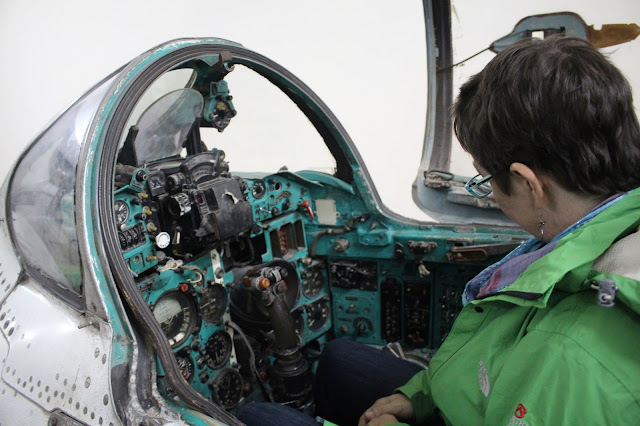The mausoleum is only open 8 - 11 am Tuesday - Thursday and on the weekend (you have to be on the grounds by 10 am). Libby and I hopped on our bikes and headed out to Ba Dinh Square after the kids were picked up for school.
The Vietnamese take the Mausoleum and Ho Chi Minh's body very seriously -- he is considered the father of their modern country and one of their great leaders. Walking up to the square, you need to pass by the security staff. Great respect must be shown while entering -- chatting, hurried movements, and indecent attire (tank tops, shorts, etc) are not permitted. Visitors are expected to keep quiet and walk slowly and steadily through the mausoleum and surrounding area.
And absolutely no photography once inside -- all handbags and cameras are checked and can be picked up outside at the exit. I looked online for a picture of what the body looks like inside the mausoleum, but I couldn't find one.
Inside the mausoleum, Uncle Ho's body lies in state under a glass sarcophagus, overseen by a four-person honor guard in the white army uniforms standing at each corner. The embalmed body is extraordinarily well-preserved. Ho's face and hands are illuminated by spotlight, with the rest of the room dimly lit. I thought it was a very solemn and fitting tribute to the man; Libby thought it was a little creepy, especially since Ho's wish was that he be cremated when he died.
From the mausoleum, we went through the square to the Ho Chi Minh Museum. I thought this was going to be a tribute to the man, showing his life's history and telling the story of his life. Instead, it was kind of a mess, not really sure what kind of museum it wanted to be.
It started with an impressive statue of Ho Chi Minh and some quotes and pictures, but then the museum veered off into the interpretive art path, and it didn't go very well.
We have no idea why there was a large table with giant fruit on it.
One of the more bizarre parts of the museum was a replica of a famous Pablo Picasso piece about the fight against fascism. While Ho Chi Minh was technically against fascism and its spread during the Japanese World War II occupation of Vietnam, this does not strike me as a large and significant part of his life -- and if the curators of the museum think it is, they picked a strange way to show it:
More representational art, this time of the American involvement in the Vietnam War:
After a quick lunch at our favorite banh xeo place in Hanoi....
...we rode our bikes to the southern part of the city to visit the Vietnam People's Air Force Museum. Because this is off the beaten path for tourists, we were the only one's there -- which was a shame, because the military hardware outside the museum was more interesting than the equipment outside the War Remnants Museum right in town:
We arrived at the tail end of lunchtime when the museum was closed, but we found a door in the back opened and discovered a cockpit of a Soviet fighter jet that you could climb in and check out the controls. It was pretty cool:
The inside of the Air Force Museum was not as interesting as others, although there was another impressive statue of Uncle Ho and some anti-U.S. posters we've seen in other places that were prominent during the Vietnam War:
































No comments:
Post a Comment